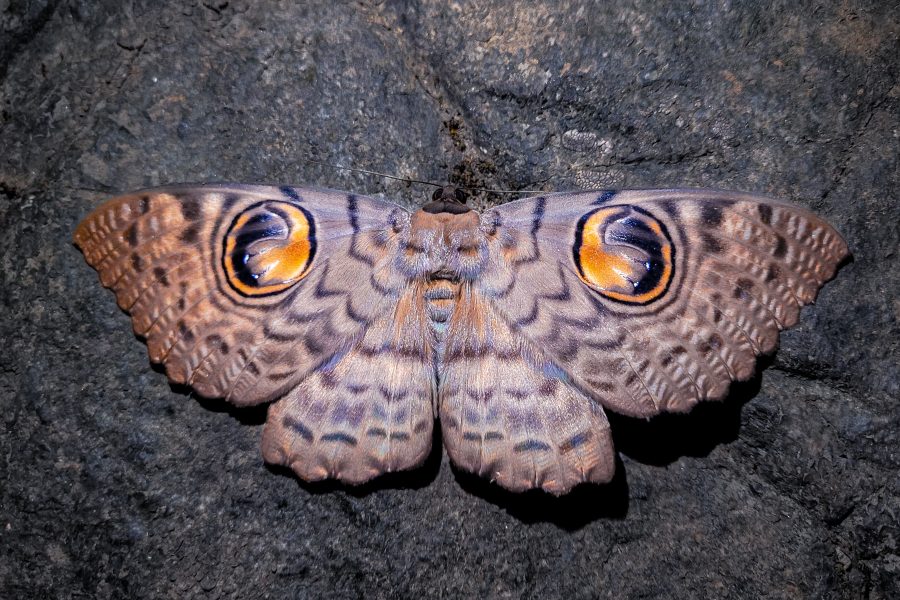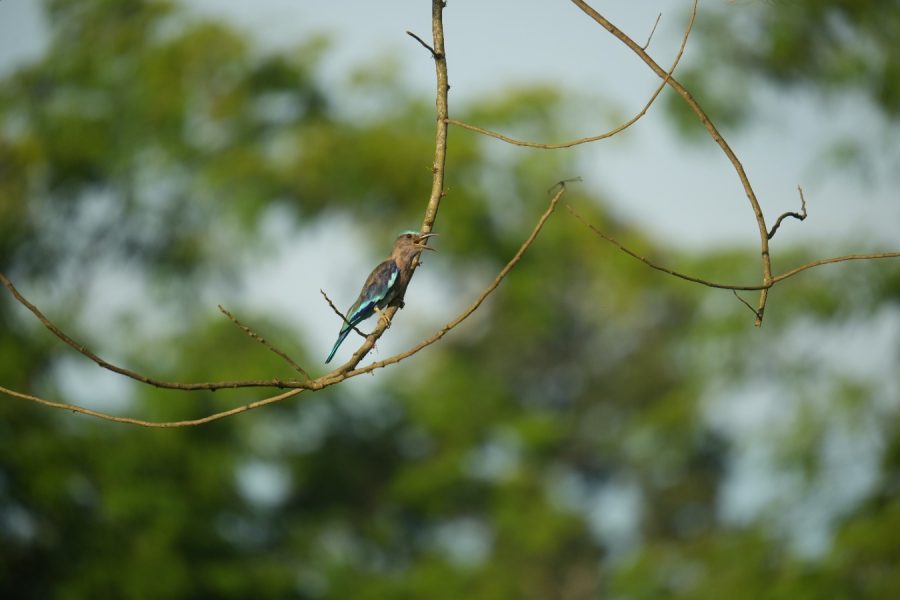As the occasion of Ganesh Chaturthi approaches us, it is imperative to talk about the plight of elephants in India. Lord Ganesh is a symbol of strength and wisdom, revered by many in India. His influence stretches widely across the country; with many holding elephants in high regard and treating them like gods. Despite the respect and love that Indians have for elephants, the population of this majestic giant is in danger, be it from loss of their habitats, electrocutions or exploiting elephants for begging and wedding processions.
Wildlife SOS held an essay contest to explore this issue and here were the results!
WINNER
Name: Netra
Age: 15
Essay: As I enter the temple, an enterprising young man approaches me, the words “two rupees to touch, five to feed,” rolling off his tongue. Beside him is an elephant, once majestic but now slumping under the weight of its bejewelled headdress, chains clinking around its feet. Its weary face, lined with creases deep as ravines, barely lifts to greet its visitors. The sight of India’s mighty pachyderm reduced to a temple trinket should shock me, but it doesn’t. Because this is the plight of elephants across our nation.
Of more than 100,000 Asian elephants that once roamed from Persian deserts to Chinese hills, only 20,000 remain in the wild. And India, home to 60% of this dwindling population, is rife with threats to elephants’ existence.
Worst of these is habitat loss. As human settlements spread like branches of an ever-growing tree, we don’t simply stretch into thin air. We encroach on land that has belonged to the wild long before our presumptuous feet trod anywhere near. We force elephants into isolated pockets of population, block their migratory routes, and destroy their ways of life. And when the displaced elephant, a product of our own selfish expansion, wanders into newly proclaimed human territory, we retaliate brutally. From 2018 to 2020 alone, more than 300 Indian elephants were slaughtered in human-animal conflict.
Adding insult to injury, industries from fashion to entertainment frequently exploit elephants. The black market for Asian elephants’ tusks thrives despite a decades-old ban on the ivory trade. Not every victimised elephant is killed, though! Some suffer a worse fate: lifelong capture. Malnourished and maimed, they are paraded through carnivals and temples alike for tourists’ amusement. Research shows that only 7% of tourist elephants in Asia experience adequate living conditions!
Even as millions of Indians worship the elephant god everyday, how can we help real elephants suffering around us?
First, the obvious solution: don’t buy ivory. But don’t stop there – as individuals, we can abstain from harmful practices, like elephant rides and visits to negligent zoos. Finally, you don’t have to do this alone. This Ganesh Chaturthi, donate to established conservationists, from the renowned Roots and Shoots to our very own Wildlife SOS. Your contribution to Wildlife SOS could help rescue and rehabilitate abused elephants throughout India.
2nd PLACE
Name: Vaishnavi
Age: 20
Essay: People gush to the streets, the internet burns with rage. They say – “It is HUMAN RIGHTS VIOLATION, one cannot illicitly peddle human life, keep a man non consensually away from his family, mercilessly beat him, and scourge and succumb him to death for selfish purposes. It is one of the most heinous crimes.” And yet, when the innocent, tongue-tied animals are put through scenarios worse than this, the people with the power of voice often go silent. The facade and ignorance which the human race pulls on so many levels is spine chilling.
Elephants are modifiers of environments. These intelligent herbivores are credited for altering and ameliorating the natural habitat for various species of the planet. These large trunked mammals with gigantic physique contribute as the ecosystem engineers in the forests and have remarkably helped in fighting climate change. Despite all this, blinded by the avarice, man has forgotten about how this harmless species has lived with harmony and has been symbolic of our culture.
Hindus celebrate the festival of GANESHA CHATURTHI, chanting the hymns of the elephant-faced Lord Ganesha or “Gajanana”. But we need to retrospect the dichotomy of our relation with elephants which can be vividly seen in pedestalizing them as God-like and poaching them for ivory on the same soil. Cases of illegal hunting of elephants for their tusks, seizing them for commercial interests, poisoning, electrocution, and train accidents have now enumerated them as “endangered” species and the case of gruesome death of pregnant elephant by eating pineapple filled with firecrackers amongst all other cases of human caused killings, smeared with various political controversies tells how the plight of elephants in the land of Ganesha is despairing and deplorable. While people enjoy elephant rides, they often forget what happens behind the curtains. Elephants are dressed in vibrant fabrics and ornamented for various rallies and festivals. These processions are nothing but a celebration of our gluttony and insensitivity towards these innocent creatures. We flamboyantly destroy their homes in the name of development.
It is crucial for us to absorb this inherent hypocrisy and take a pledge to not contribute, promote and do anything which directly or indirectly aids in poor treatment of these majestic creatures who have been inhabitants of our planet for years and realise that we have no right for being the reason that they get wiped out from the face of the earth.
3rd PLACE
Name: Lakshay
Age: 27
Essay: We worship Ganesha because it is thought that doing so will remove all obstacles and open the path for us to proceed in life. We do this before beginning any new work or on an auspicious day. We build giant statues of the lord and spend millions celebrating him. But regrettably, we completely overlook the plight of the animal that represents Ganesha in misery and pain.
Elephants have been used for many years as a source of transportation, as entertainment in circuses, as leisure rides, and as a way to show pride during processions and festivals. They are beaten and tamed to the point that their skin tears and bones break. Their feet get hurt from moving around barefoot on concrete roads. Pus builds up and infects their entire internal system. Their bodies are painted with toxic pigments and might even be cancer-causing.
Elephants are beaten out of exasperation and left to die by their caretakers because of their inability to be beneficial due to sickness or old age. Their feet are often caught by metal spikes attached to poles that would pierce their skin and infect their bones. Cases have been registered where elephants were made blind and left open on the roads to be struck by heavy vehicles. The ongoing bullying severely damages their confidence, which keeps them constantly scared.
However, over time, slaughtering, kidnapping, and trafficking have decimated their natural breeding system. As a result, the original species of Asiatic elephants have significantly reduced in the count. If we do not save them now, Elephants will soon become extinct.
While the nation has just celebrated its platinum jubilee of independence, hundreds and thousands of elephants still wait for a free life in the wilds. It’s time that we refuse to fun-ride Elephants, denounce any abuse or exploitation of them, and donate some time to working at centres for rehabilitating injured elephants. We shall create more awareness about their plight. The animal who represents Ganesha needs the same respect he commands.
Like humans, Elephants are highly intelligent and emotional animals with memories strong enough to last their lifetime. Though it would be hard for them to forget the inhumanity already meted upon them, we should make amends and try making it a better place for them to live and possibly pardon our race.





